 This week we have Denise Ortakales who is a gifted paper sculpture illustrator. Here is Denise:
This week we have Denise Ortakales who is a gifted paper sculpture illustrator. Here is Denise:
I was always artistically inclined as a child and loved to cut and paste. After high school I went to college and earned an Associate degree in Graphic Design. I married soon after, working in a variety of jobs, everything BUT graphic design. Why? Who knows, but different crafts and hobbies kept my artistic fires burning for years.
After my two children were born, I took some evening courses to update my graphic design skills. One of my teachers helped me realize that I what I really wanted to be was an illustrator. I had been buying beautifully illustrated children’s picture books for years, for the children I thought. I wasn’t fooling any one but myself.
In 1997, I went back to school. I have my family to thank for their support (and babysitting) throughout the next two years. Within one month, I had my first assignment and I’ve been busy ever since. In 1999 I graduated from the Art Institute of Boston with a BFA in Illustration. Soon after I received a contract for my first children’s book to illustrate.
Fast forward to today. I am still doing a variety of projects for various adult and children’s magazines (Consumer Reports, Utne Reader, Ladybug, Spider) and children’s books. I’ve also taught at the Art Institute of Boston, Chester College, and McIntosh College.
Here is Denise explaining her process:
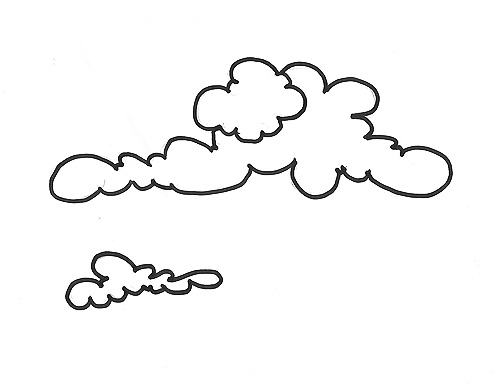
First I start with a sketch…
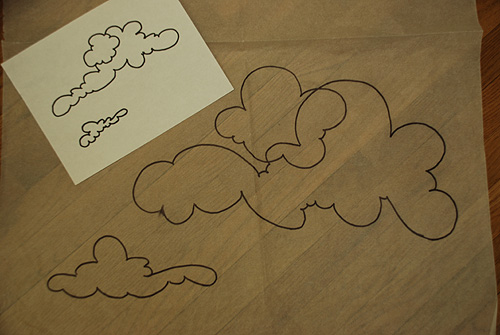
Next I enlarge the sketch and trace it onto tracing paper.
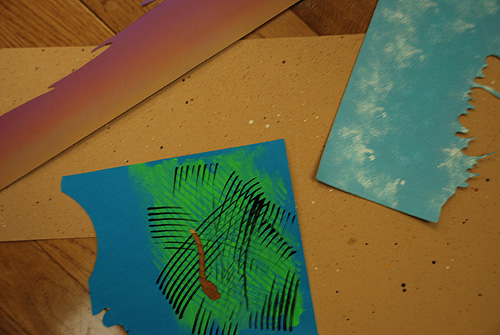
I assemble my papers. Sometimes I paint my papers ahead of time. Sometimes I use a toothbrush, sponge, airbrush or anything to get the different textures I like.
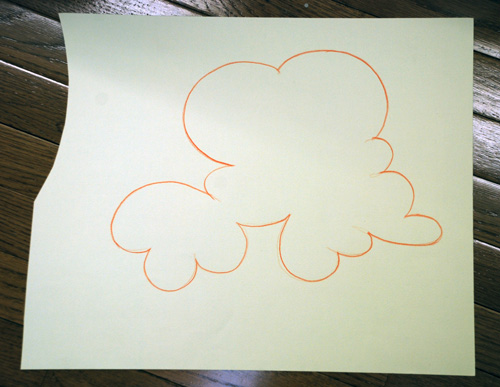
Each shape is transferred to the colored paper . . .
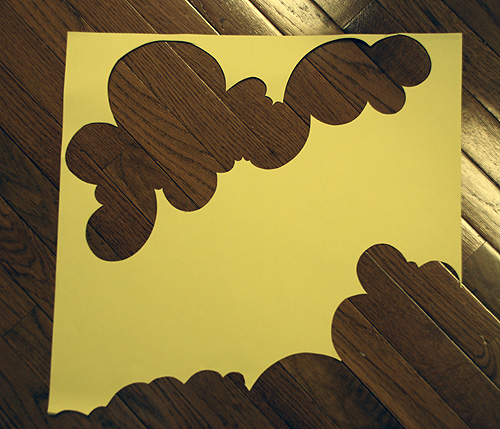
. . . then cut out. I use an X-acto knife and many blades.
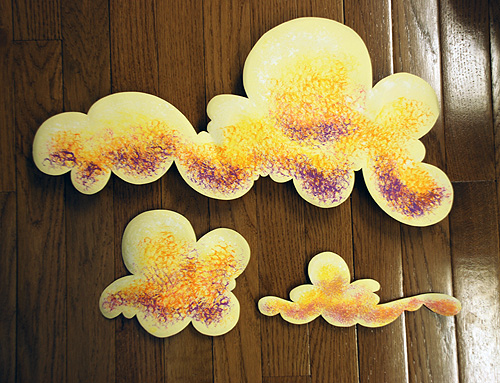
For the clouds I decided to paint them after they were cut. That way I could place the sponge painting exactly where I wanted it.
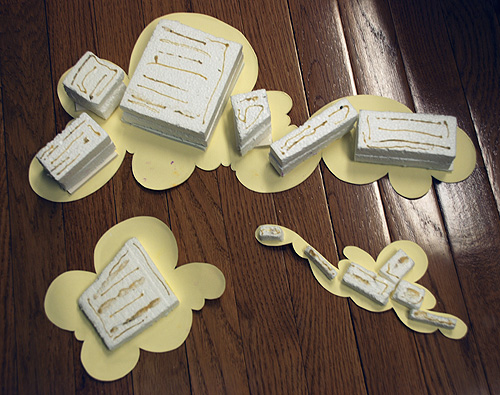
I glue spacers behind each piece. The thickness depends on how high I want it to stick above the background and other pieces. Typically I use foam core but you could use any type of cardboard or foam meat trays. Here I used thick blocks of Styrofoam. I usually use a white glue to glue the piece to the background. Aleene’s Tacky glue works best. Here I’ve used a repositionable glue which is why it looks yellow.
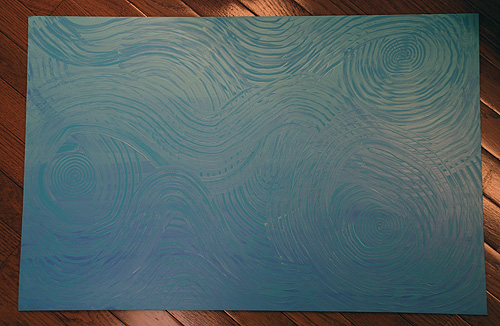
Here I’ve painted the background with a variegated swirly pattern.
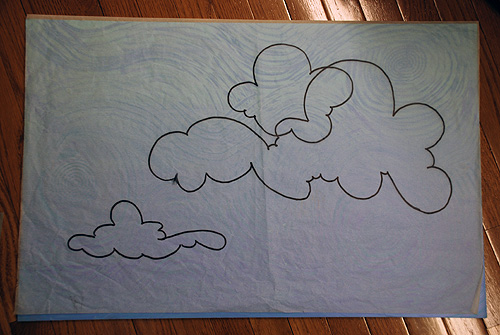
At this point I lay my tracing paper sketch over the background. It’s a guide for placement of the other pieces.
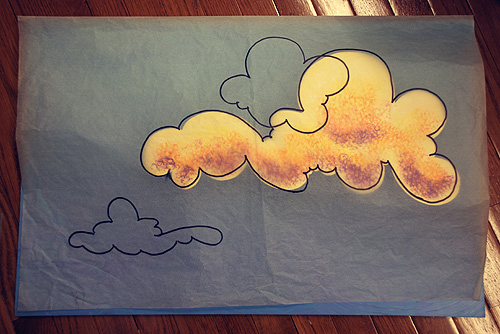
Gently I lift the tracing paper and place the piece underneath it, not letting it touch the background until its fairly close to where it belongs. I’m usually able to fine tune the placement once its laid down. I continue this way until its done.

Here’s the finished piece. After it’s dry, it can be photographed.
Below are the covers of Denise’s books.
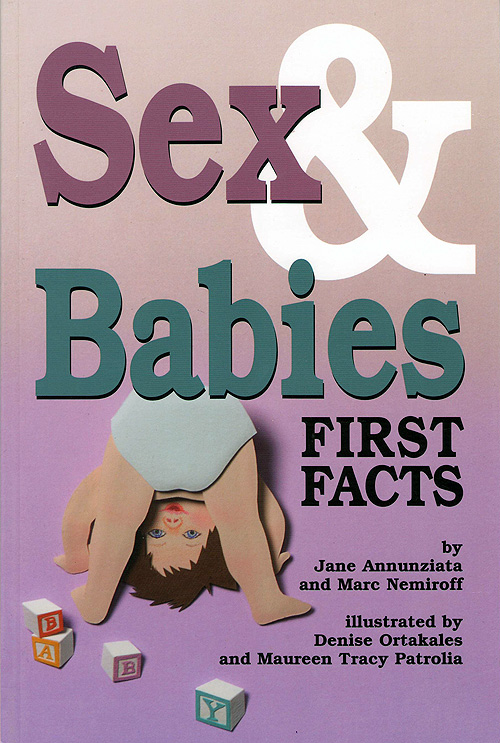
How did you end up going to the Art Institute of Boston?
I was looking for a small school with an illustration program. NH didn’t have one at the time. A substantial scholarship sealed the deal. I thought for sure traveling 100 miles each way, three times a week would get old fast. But it didn’t. I learned to love my commute—no children whining, I could listen to MY music, I could reflect on my day—I kind of miss it!

What types of classes did you take that really helped you to develop as an illustrator?
Illustration I & II, Children’s Book Illustration, Advertising Illustration, Buses, Billboards & CDs, 3D Illustration, Promotional Illustration, Illustration Survey. I made the mistake of taking five studio courses one semester. I did approximately 25 illustrations within those 15 weeks. Brutal, but I now know how to meet a deadline.
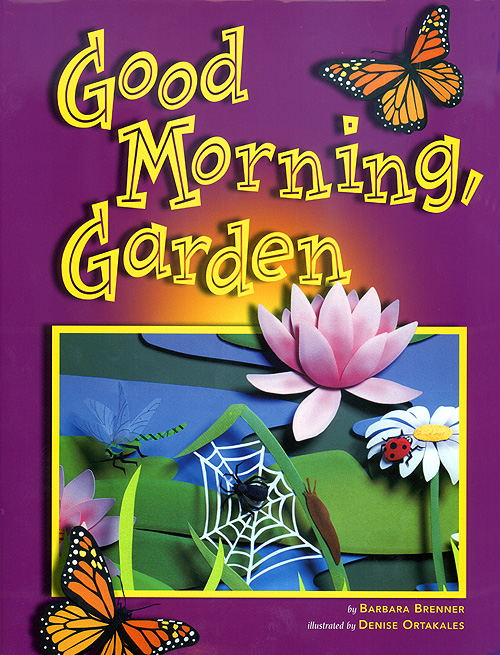
What did you do after you graduated?
6 months later I had my first book contract. I also did some editorial illustration.
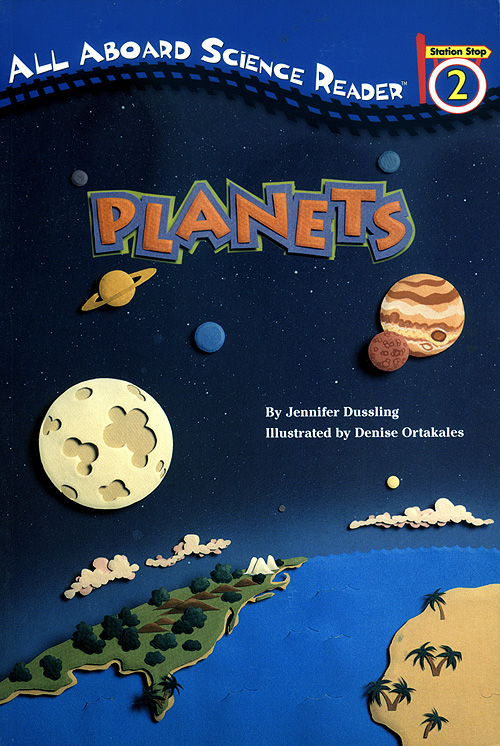
Did the Art Institute help connect you to companies that could give you work?
Not directly, but I got my first job from an alumnus who looked for other AIB grads.
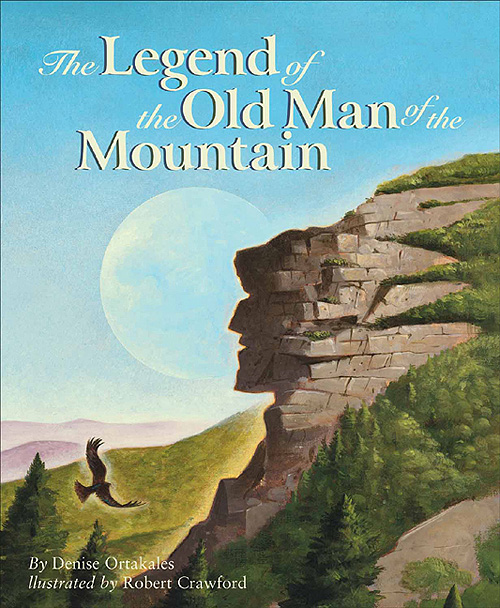
Did you start out right from the start doing paper sculpture?
Yes. Once I discovered my affinity for paper sculpture, then I decided to become an illustrator and go to school.
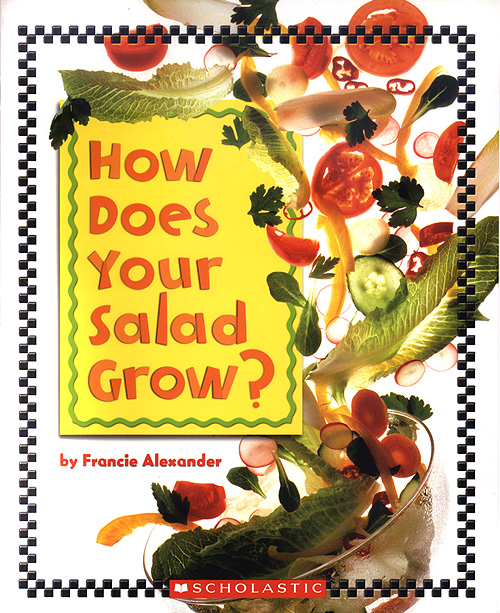
What was the first thing you did that you got paid to do?
It was a cover and two-page spread for a computer magazine. I had only been in school for one month. Gulp! After the phone call, I ran to my teachers and said, “What do I do now?” I think they were skeptical that I could pull it off.

How long have you been illustrating?
That first job was in 1997.

How many children’s books have you illustrated?
Six.
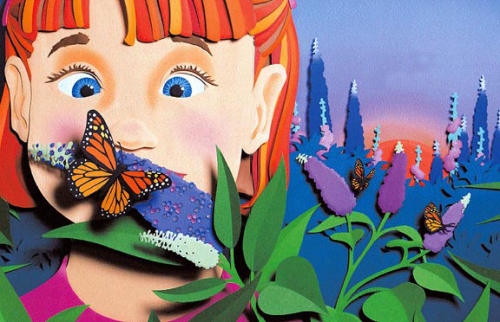 What was the first book that you illustrated?
What was the first book that you illustrated?
Planets by Jennifer Dussling, published by Grosset and Dunlap in 2000. I was mortified that they published 6 spreads upside down in that first edition (well, they were round planets!)

How did that book contract come your way?
Probably from sending samples or postcards.
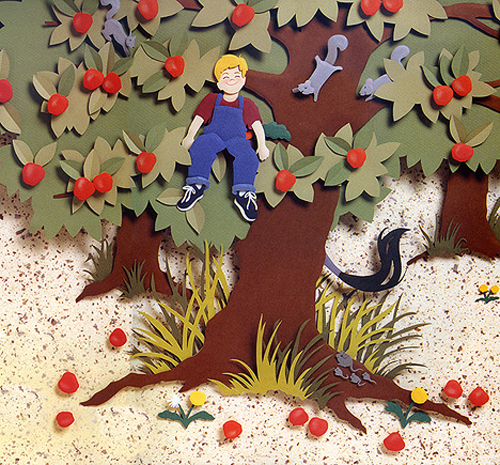
I see you have published with Grosset and Dunlap. How did you connect with them?
Good Morning, Garden was published by Cooper Square Publishing. Can you tell us a little bit about them?
It was published by Northword Press which was bought out by Cooper Square. Working for Northword was great. Sadly their gone.

How many children’s magazines have you done work for?
Ladybug, Click, Spider, ASK, Babybug, and Cobblestone.
Was The Legend of the Old Man of the Mountain (Myths, Legends, Fairy and Folktales) the first book you wrote?
It was the first one I wrote that sold. I have a few picture book dummies I’ve been working on.
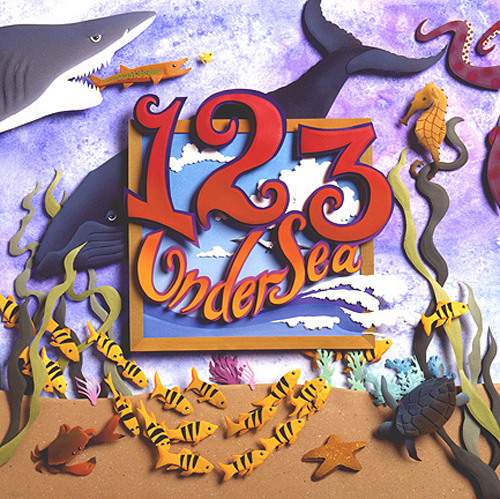
How did that come together with Sleeping Bear Press?
The Legend of the Old Man of the Mountain was based on a beloved rock formation here in New Hampshire. While at AIB, I took a Writing for Children course. One of the assignments was to rewrite a folk tale or legend and make it your own, so I rewrote one about the Old Man. When the rock formation collapsed in 2003 and made the news, I knew it was time to dust it off. I revised the story and sent it out immediately. Sleeping Bear called within a month.
Carrot in my Pocket was published by Moon Mountain Publishing. Could you tell us a little bit about them and how you got the job to illustrate?
They were a new company. Since several friends also worked on some of their early books, I suspect they looked at local illustrators through the New England chapter of SCBWI. Unfortunately, they have since closed.
I notice you have illustrated a couple of books with other illustrators. How did that work?

Do you ever touch up the photographs with Photoshop?
Yes. Mostly dust or lint that shows up on the photographs.
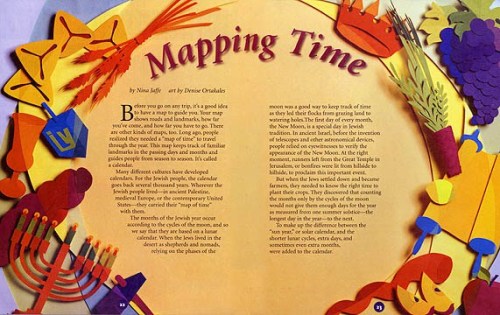
What types of things do you do to get your work seen by publishing professionals?
Attend conferences, sign up for critiques, portfolio displays, website, BLOG, mail postcards.

Do you have an agent? If so, who and how long have the represented you? If not, would you like one?
No agent. I’d be open to open to one though.
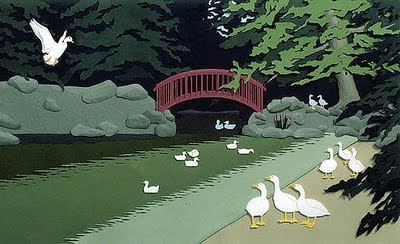
Have you seen your style change since you first started illustrating?
Well . . . I’ve actually been considering a change . . . to 2D. I am a little envious of 2D artists that don’t have to worry about photographing their artwork, or storing bulky pieces. A stack of spreads for a picturebook can be 20 x 30 x 4 feet tall! I’ll never give up on 3D but I’ve been working on an acrylic style to give clients options. It’s also good to mix things up once in a while. Keeps things fresh.

Have you gotten any work through networking?
We’ll see. I just attended a conference and rubbed lots of elbows.

Do you do any art exhibits to help get noticed?
No but I probably should.

Are you open to doing illustrations for self-published picture book authors?
No. I prefer working with established publishers. They understand art and artists, and allow you the freedom you need to create the best book possible. The fact that they can pay a decent fee doesn’t hurt either.
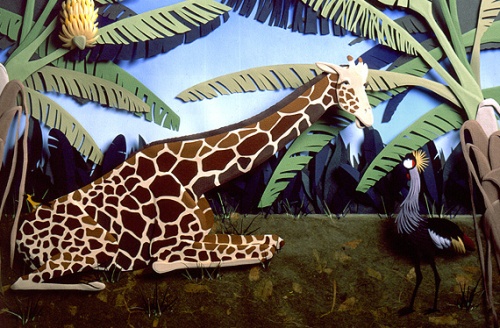
Do you own a graphic tablet? If so, how do you use it?
I have Wacom Intuos 3 that is a few years old now. I only use it for sketching.
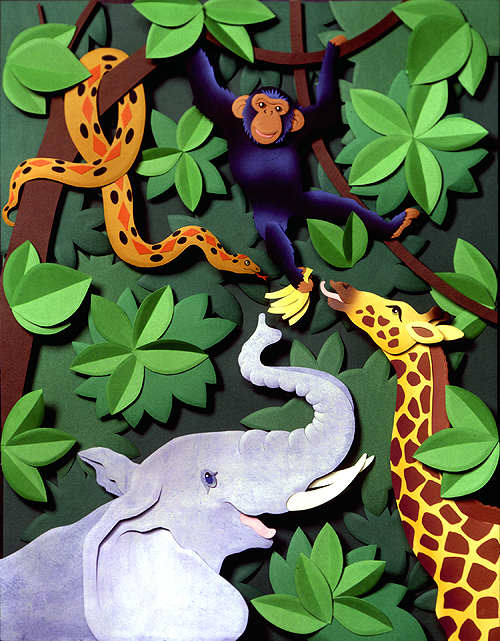
How much time do you spend working on your art?
Not as much as I should because I have a day job, or rather, a morning job. If you’re asking how long it takes to create my art, a typical spread takes 2-4 days after the sketch has been approved by the publisher or client.
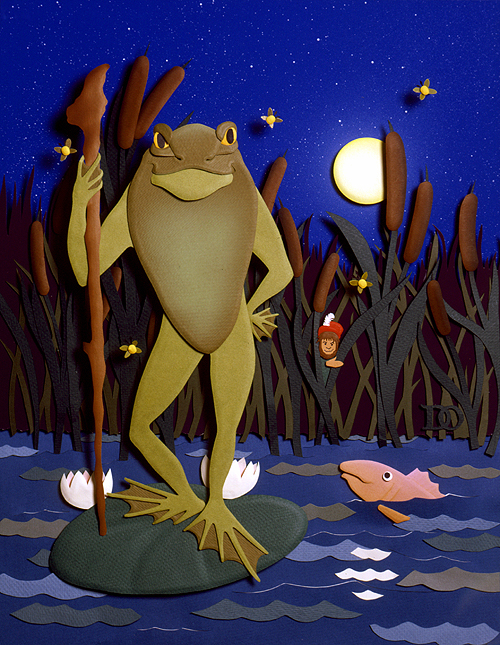
Any books on the horizon?
Nothing currently in the publishing pipeline.
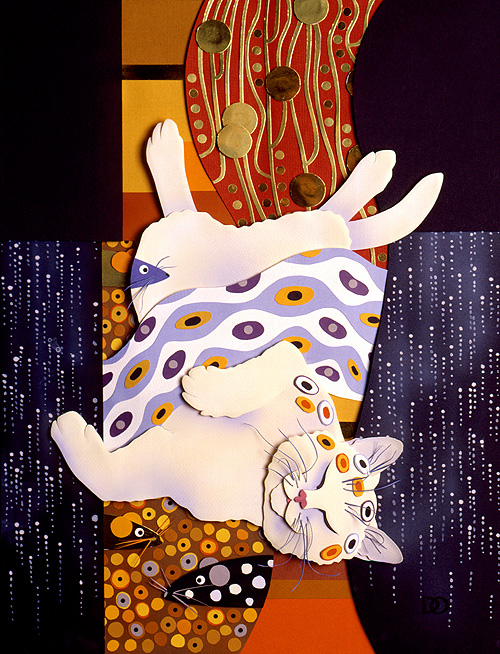
What are your career goals?
I suppose the holy grail is a picture book that I’ve written AND illustrated. But really I would be happy with a few dozen more books, illustrated or written.

Why did you choose Paper Sculpture instead of drawing and painting like other illustrators?
I like to say that paper sculpture chose me instead of me choosing it. But in reality I remember seeing it as a child and wondering how they did that. When I was considering illustration as a career, I found a book on the paper sculpture and I knew that I had to try it. It was one of those Aha! moments that you shouldn’t ignore.
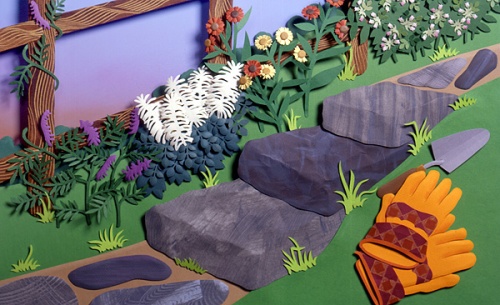
What kind of paper and glue do you use?
I use charcoal and pastel papers which are about the same thickness or a little thicker than construction paper. I prefer the papers that are colored in the pulp rather than printed color but will use anything if it’s the perfect color or texture. My favorite glue is Aleene’s Tacky Glue which is a thick white glue available at most craft stores. Really, any white glue will work, the key is to put it on VERY thinly.
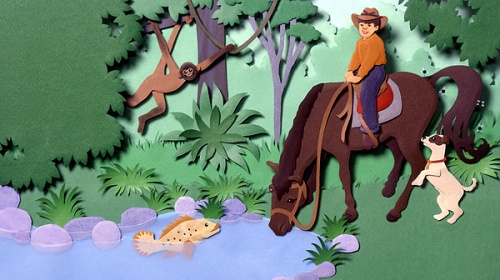
What do you use to make your images 3-dimensional?
I use scrap pieces of foam core and mat board glued behind each piece of paper. If you’re trying this at home, try several layers of corrugated cardboard or foam meat trays work well too.
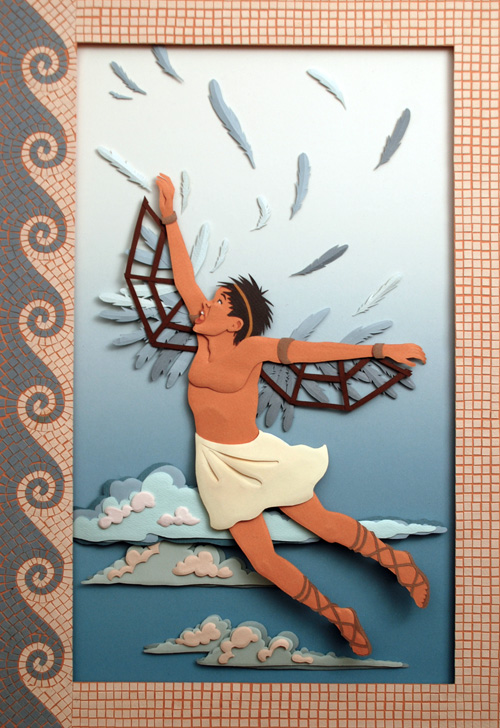
How did you learn to do Paper Sculpture? Did you have to go to school?
I really taught myself. I went to art school twice but I didn’t learn to do paper sculpture there. There are some books on the topic but the best way to learn is just to try it. Here are some of my favorite books:
Paper Sculpture : A Step-By-Step Guide by Kathleen Ziegler and Nick Greco.
More Paper Sculpture by Kathleen Ziegler and Nick Greco.
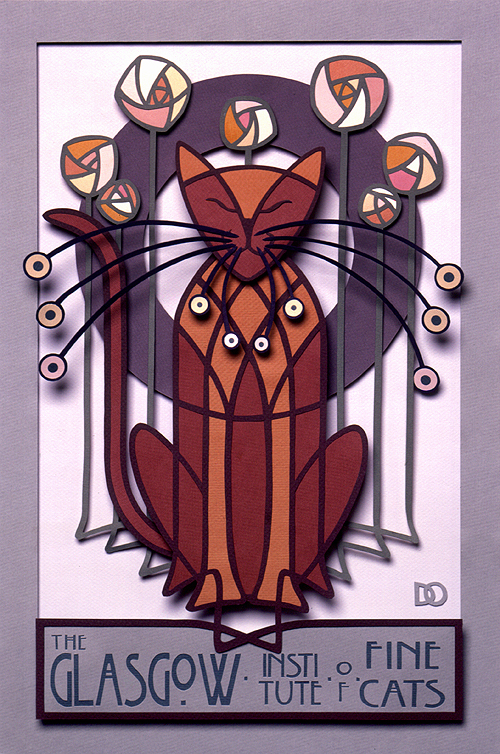
Couldn’t you get the same look on the computer?
Yes, you could get a very similar look. But I enjoy the creating of the actual piece, getting sticky fingers and paper cuts. I’ve always enjoyed a variety of crafts and creating art on the computer doesn’t hold the same fascination for me. Besides, I’m already on the computer too much surfing the internet, reading email and updating my websites.
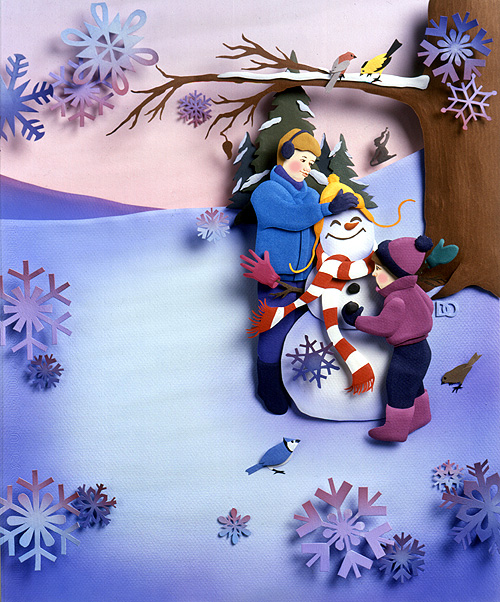
What does someone need to consider if they want to try creating paper sculpture?
Transferring the 3-dimensional image to a 2-dimensional page is by far the biggest headache. Unless you are a professional photographer, you need to hire one to insure that your work will look it’s very best. At first, when you are just creating samples, it is a VERY expensive cost to cover. Be prepared for clients that have never used 3-dimensional artwork to balk at the photography expense. It’s your job to educate them.
The other problem is storing these darn things. Make friends with a framer who will give you good deals, otherwise they start to pile up and take over closets.
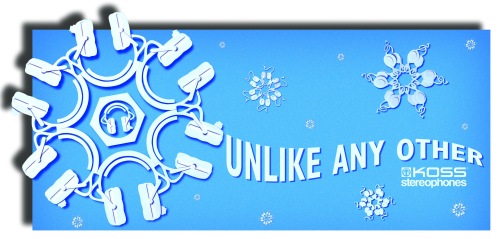
Are there any schools that teach Paper Sculpture?
Not to my knowledge, and I think that’s part of the fun of it, that a million other people aren’t out there doing the same thing. So buy yourself a good book (see above) and dig in. It’s not that difficult. You probably did something similar as a kid.
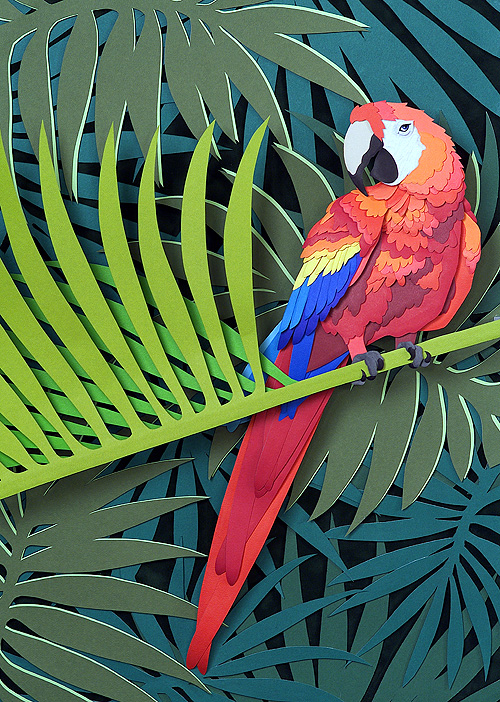
How do you handle the photographing of your artwork?
Because my work is 3-dimensional and difficult to ship, I have it professionally photographed locally. The photographer and I work together to create depth using lighting and shadows. I can then supply clients with digital files for publishing purposes.

Do you need to go to art school to become an illustrator?
Art School is absolutely not necessary to become an illustrator. No art director has ever asked to see my degree. It will, however, bring you up to speed quicker and perhaps save you from learning your lessons the hard way. I am a firm believer in the merits of art school but it may not be for everyone. Some of the benefits that you may not have thought of are:
Learning to talk intelligently about your work which you’ll need to be able to do with an Art Director.
Learn to be objectively critical of your own work.
Form a circle of peers that you can call on for advice and comradery when you are out on your own.
If you can meet assignment deadlines in art school, you’ll have no problems meeting deadlines in real life.
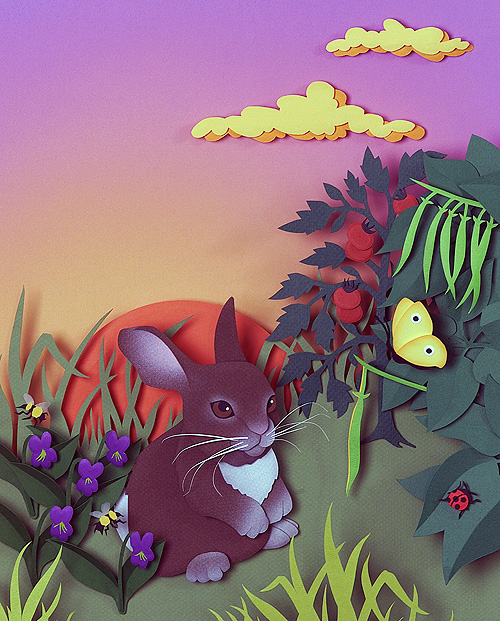
What are you working on now?
Um . . . a YA historical fiction novel? Yes, I’ve written it. 70,000 words, thank you very much. I have tried desperately to write picture books but could never get them below 2,000 words! So I embraced my wordyness and went in the other direction. It is such a rush finishing a first draft of a novel. I love it! It engages a completely different part of my brain. But that also makes is hard to illustrate and write novels at the same time.
Last summer I was appointed Illustration Coordinator for Northern New England SCBWI, so I am also busy working on conferences, Illustrator’s Day, and other activities for our illustrators.

Any words of wisdom you can share with the illustrators who are trying to develop their career?
Yes, listen to your inner voice. Not the one that whispers how bad you are at drawing, or telling you you’re a poser. You’re probably already listening to that one. Stop! Listen closer to the one that tells you something in your image is not working, or needs fixing. Have you ever had someone critique your work, and you thought, “yeah, I kinda knew that?” It’s because you ignored that little voice (I speak from experience.) Listen and your work will improve.
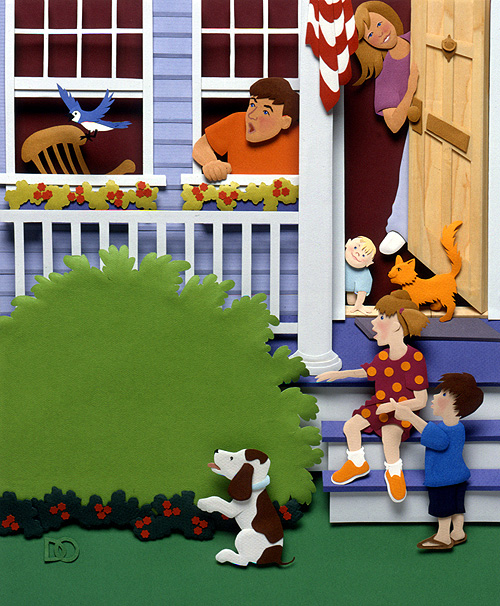
Thank you Denise for sharing you wonderful artwork, process, journey, and expertise. Please make sure you continue to share you successes with us. We looking forward to following your career.
If you would like to visit Denise and see more of her work, you can find her at: www.sculptedpaper.com.
Taking a minute to leave Denise a comment is greatly appreciated. Thanks!
Talk soon,
Kathy
Filed under: authors and illustrators, Illustrator's Saturday, inspiration, Interview, picture books, Process, Uncategorized Tagged: Art Institute of Boston, Denise Ortakales, Grosset and Dunlap, Illustrator process, Paper Sculpture, Sleeping Bear Press



Oh Denise,
Wonderful interview!!!
Also, beautiful artwork though I think I voted wrong. I meant to give you a 5***** but started checking stars and it posted a bad review before I was finished…sorry. Please delete it if you can-I can’t.
xo
Your work is absolutely gorgeous, Denise!
Very fine! Makes me want to get out my scissors. Congratulations.
Beautiful work!! Wonderful, interesting interview!! Thank you for all the details.
Very interesting and unique approach with beatiful results. Thanks for sharing this.
Beautiful colors and textures, Denise. I especially love the animals!
Hi Denise,
Your paper sculptures really “pop”. Your pieces remind me of paper tole, but so much nicer. I can just imagine the hours it takes to create. All the best too with your novel.
Tracy
enjoyed seeing this process. Denise, you are so talented!
Your work is really cool!